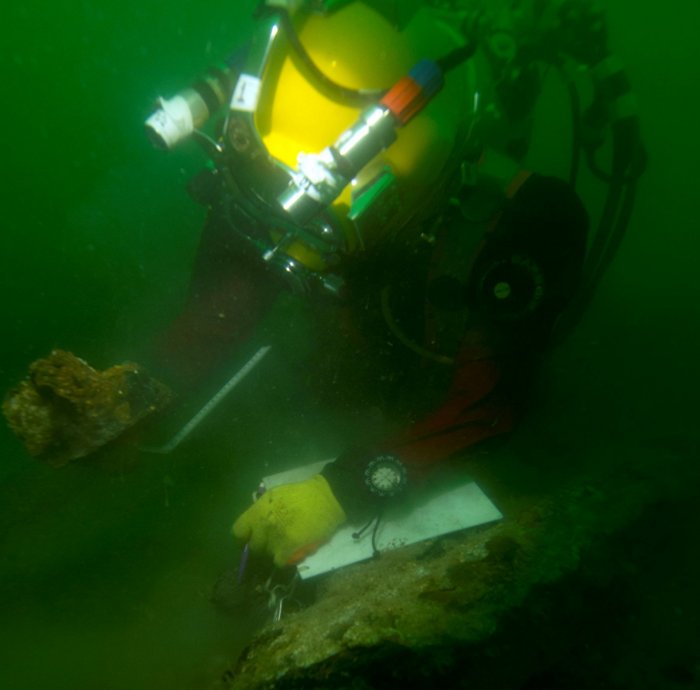Conny Waters – AncientPages.com – Traces of the past remain hidden in rivers, lakes and seas. But we rarely look underwater and, as they say, out of sight is out of mind.
In his inaugural lecture Martijn Manders will explain why underwater archaeology is so important to understanding our history.

Silver coins from the Rooswijk. #Rooswijk1740 project – S. Visser
‘The water is full of interesting finds’, says Manders, Endowed Professor of Underwater Archaeology and Maritime Heritage Management. ‘In the most unexpected and remote parts of the sea are 1,623 Dutch-owned ships and these tell us who and what we are.’ One example of this is the Dutch East India Company ship Rooswijk from 1740. Research into this ship brings to light the international and Dutch maritime trade: large trade networks that the Netherlands still relies on.
Researchers have also concluded, for example, from objects from the Rooswijk, that silver was so important to these trade networks that even the common man took it to trade with on voyages. The Netherlands has retained an important position in the foreign exchange market, and our big banks are the result.
Maritime archaeology therefore offers insight into the origins of systems that we use every day and makes them more tangible.
Normal ships define crucial moments
The Netherlands Coastguard, for example, was established after the sinking of the Hr. Ms. Adder in 1882.
This monitor ship got into trouble off the coast of Scheveningen. For hours people watched the ship bob about, smoke rising, but no one tried to help and 60 crew members perished. After the tragedy there was a mood of ‘this can never happen again’ and this marked the start of the Coastguard.

Underwater archaeologist at work. #Rooswijk1740 project – M. Pitts
A wreck in the Scheurrak SO1 area on the Texel roadstead also tells a story about the development of a system. The ship was carrying huge amounts of grain and symbolises the grain trade with the Baltic and the accumulation of great Dutch wealth.
‘The striking thing about both the Hr. Ms. Adder and the Scheurrak SO1 wreck is that they were very normal ships, with no king or other important people on board’, says Manders, in a press release.
‘But these normal ships illustrate crucial moments in Dutch history and teach us things about systems that we don’t always find in the historical sources.’
Slave shackles evoke feelings
Maritime archaeological sources are objective, in contrast to subjective written sources. This means archaeology can help with sensitive topics such as slavery or colonialism. Skeleton analysis, for example, can provide information about the conditions at the time.
And people feel more of a connection to the story because of the tangibility. Shackles from a shipwreck can help start a conversation about the role of slavery in the Dutch economy and its effect on today’s society.

Underwater archaeologist at work. #Rooswijk1740 project – M. Pitts
‘Such finds should force us to think about our history and hold a mirror up to ourselves’, says Manders.
The тιтanic effect
Archaeological finds from the water provide a wealth of information about our history. Why then are only nine sites listed? It’s the principle of out of sight, out of mind, says Manders, ‘When people look at water they see water. They forget that there is a whole world under the surface.’ And the process that determines whether something is national heritage is relatively unfathomable. Who decides that something is heritage? Are they academics with specialist knowledge? Or is it only heritage if it is popular in society?
‘Fifty years ago, the тιтanic, for instance, would not have counted as heritage but James Cameron’s film completely changed society’s perspective’, says Manders. ‘If you see pictures of the wreck, you immediately see Kate and Leo. Then it suddenly has a meaning for people and gains value.’ In short, what people consider to be heritage varies from person to person and over the years. This makes it difficult to decide whether finds should be listed as national heritage or not.
Heritage management
Manders calls for more attention to be paid to the human and social side of heritage management. ‘We often talk about wrecks, archaeology and excavations but what do we do with these in our society today? It is important we use them to further our understanding of ourselves and others.’
Written by Conny Waters – AncientPages.com Staff Writer





